.
Apoll und die Figuren am West- und Ostgiebel des Zeustempels
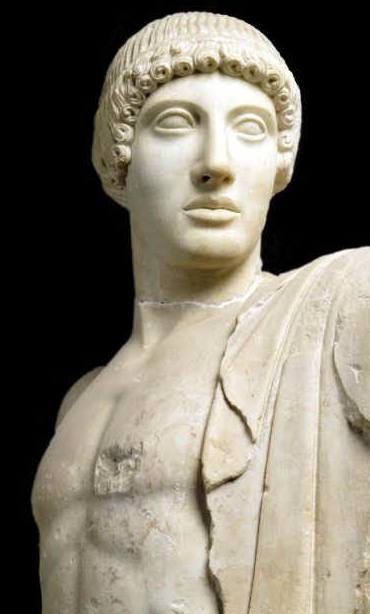
Apollo in the Zeus Temple in Olympia, the central figure of the western pediment sculptures,
Apollo (3D View) German Web page
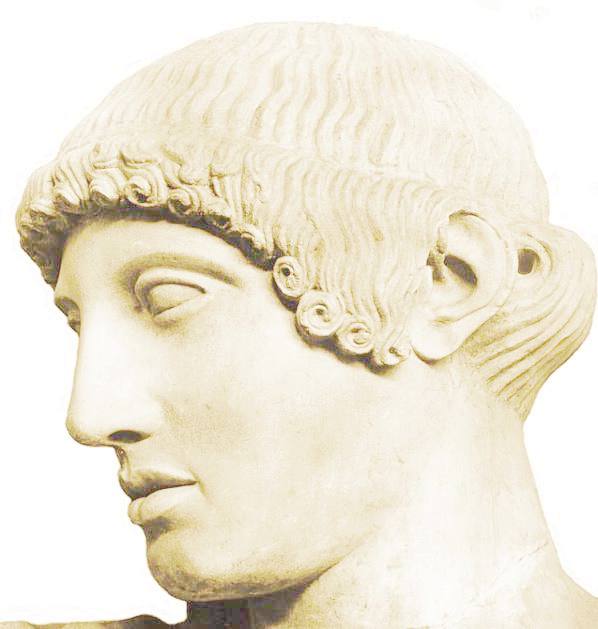
A closer look of Apollo
A higher resolution image of Apollo
http://digi.ub.uni-heidelberg.de/diglit/curtiusadler1894/0025
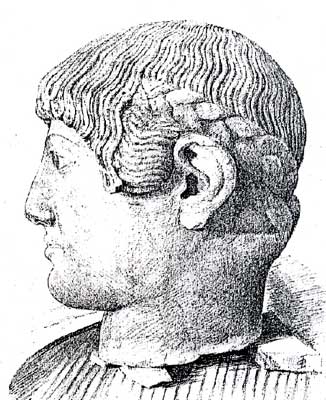
Some similarity with a head found on the Acropolis, Asty Newspaper, 15.11, 1887
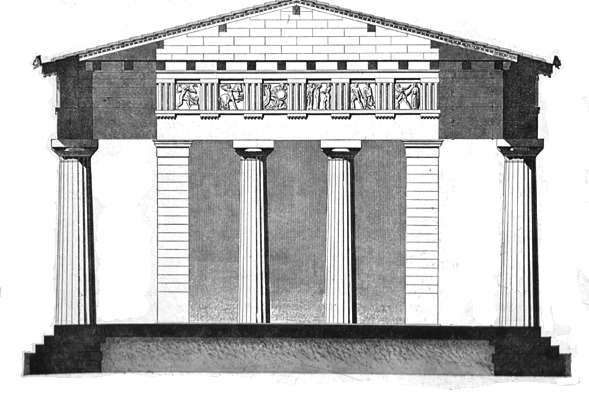
The Zeus Temple in Olympia, (a section) inside with The Metopes with the labors of Hercules
The Temple in the center of the Altis was the work of the architect Libon of Elis. A Doric peripteral style, six by thirteen columns built between 470 BC and 456 BC. A ramp, still extant, led into the prodomos. It was at this entrance that the winners of the games were crowned with laurel wreaths. The cella was lined with two colonnades of seven Doric columns, which supported a second tier, forming a gallery from which pilgrims could get a better view of the great statue of Zeus. The chryselephantine statue of Zeus stood at the far end of the cella. A square area at its base held oil which kept the wood of the statue from expanding and cracking the ivory. The temple was burned after the order of Theodosius II given in 13 November 426 AD and later badly struck by earthquakes in the period 522-551 AD. Information Source
West- und Ostgiebel des Zeustempels .
The Zeus Temple in Olympia and the East and West Pediment Sculptures. Parian marble sculptures filling a huge triangular space of each pediment (26.39 m long and 3.47 m high)
Figures:
East Pediment: River god Alpheus? , Charioteer , Chariot boy or observer , Chariot Team ,Arkas or a chariot boy , Sterope or Hippodameia , Pelops , Zeus , Oenomaos , Hippodameia or Sterope Old Man , Chariot team (Right) , Seer ,Crouching Girl , River God (Kladeos?)
West Pediment: Group of Lapiths , Deidameia and Centaur , Apollo , Theseus , Eurytion ,Lapiths and Centaur , females in each corner , Old Woman
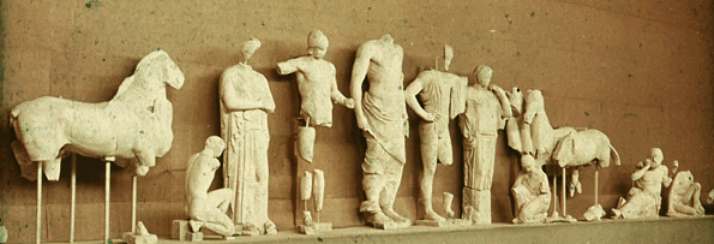
The East pediment shows the chariot race between Pelops and Oenomaos with Zeus at the center (original height 3.15 m).
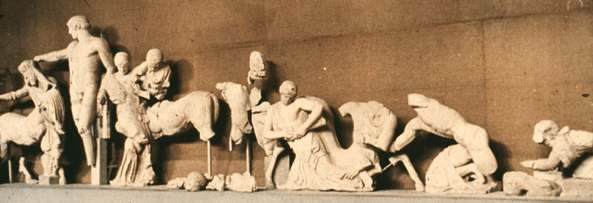
The West pediment, with Apollo as a central figure shows the abduction of the Lapith women by Centaurs.
In the centre of the composition Apollo (3.09 m high), god of reason and order in the world, intervenes to punish the offenders, his bow in his left hand (only the sockets which held it survive). To the right of the god Peirithous is placed Eurytion, king of the Centaurs, who had grabbed the young nymph Deidameia by her hands and feet; to the left Theseus (2.51 m high), friend of Peirithous, is about to inflict a mortal wound on another Centaur to free a Lapith woman from his violent embrace. ...The outcome of the battle between Lapiths and Centaurs has been settled since Apollo's right hand rests protectively on Peirothous' shoulder. This is the god who puts out his hand, as the ancients dubbed him, seeing him as a benevolent deity who intervened on the side of the innocent. Nikos Yalouris
THE SCULPTURE OF THE TEMPLE OF ZEUS OF OLYMPIA (PDF File)
Apollo was worshiped throughout the Greek world, at Delphi every four years they held the Pythian Games in his honor. He had many epithets, including Pythian Apollo (his name at Delphi), Apollo Apotropaeus (Apollo who averts evil), and Apollo Nymphegetes (Apollo who looks after the Nymphs) or Lykeios (wolf) as the god of shepherds. Apollo the central figure from the west pediment of the Temple of Zeus, at Olympia, showing him declaring victory in favor of the Lapiths in their struggle against the Centaurs. The theme is a wedding feast of the Lapith king, Perithoos one of Zeus's sons. The centaurs with a human head and torso and a horse's body were invited but they drank too much and then tried to kidnap the young women present. The Centaurs represent the Persian (horse loving) barbarians who were defeated by the Greeks in Marathon.
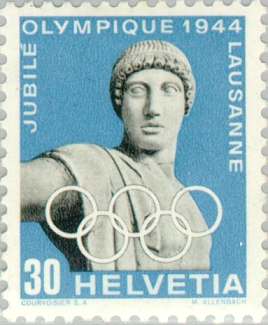

Stamps of Apollo
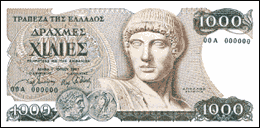
1000 Drachmae with Apollo, before the replacement by the Euro
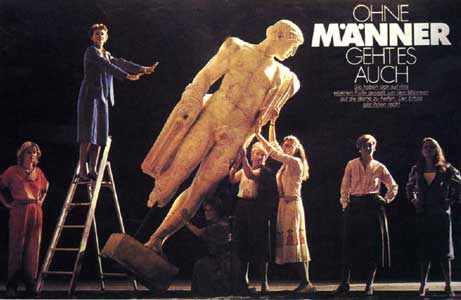
Apollo in an advertisement in a German journal "Frauen" for feminists. The title "It works even without men", Apollo here looks in the opposite direction than in the Zeus Temple.
The Colossal Statue of Zeus in Olympia
The Nike of Paionios in Olympia
| Ancient Greece
Science, Technology , Medicine , Warfare, , Biographies , Life , Cities/Places/Maps , Arts , Literature , Philosophy ,Olympics, Mythology , History , Images Medieval Greece / Byzantine Empire Science, Technology, Arts, , Warfare , Literature, Biographies, Icons, History Modern Greece Cities, Islands, Regions, Fauna/Flora ,Biographies , History , Warfare, Science/Technology, Literature, Music , Arts , Film/Actors , Sport , Fashion --- |

